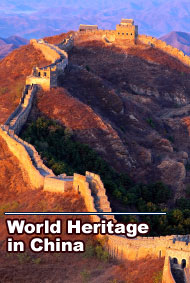
|
|
|
Potala Palace (Lhasa City, the Tibet Autonomous Region)
a. Brief Introduction Situated on Potala Mountain in Lhasa, capital of the Tibet Autonomous Region, the Potala Palace was first built in the 7th century, for the wedding of the Tibetan king Songtsan Gompo and Princess Wencheng of the Tang Empire. Since it was completed, the palace has been expanded many times. In 1645, the 5th Dalai Lama was appointed by the government of the Qing Dynasty as the local temporal and religious leader of Tibet, and the palace was reconstructed. In 1653, the 5th Dalai Lama moved from Drepung Monastery to the palace. Thus the Potala Palace became the political center of Tibet. The Potala Palace's halls include worship and pagoda halls, the North Square, the South Square and the Dragon King Pond. The Main Building has 13 floors, with a height of some 110 m and a width of about 360 m. It is surrounded by eight temples, where there are tens of thousands of Buddhist statues. In the Buddhist Practice Cave are preserved the paintings of Songtsan Gompo and Wencheng made in the 7th century. Pagodas in the pagoda halls for each Dalai Lama are well built, in particular, the pagoda for the 5th Dalai Lama, which has a gold covering and is decorated with valuable jewels. Another important building is Qingsha, where the ministers for Tibetan affairs of the Qing Dynasty presided over the inauguration of the Dalai Lamas. b. Cultural Heritage Built on a mountain slope over 4000 m above sea level, the Potala Palace is known as the Pearl on the Roof of the World. Its construction and furnishing reflect the superb skills of ancient artisans and the great attainments of Tibetan architecture. Superb Architectural Achievements The Potala Palace is composed of the Red Palace, the White Palace and some other accompanying buildings. These buildings were constructed at different times, but they are all in harmony with the surrounding terrain, so that the whole building complex appears magnificent and integrated. It is a real ingenious masterpiece. A Paradigm of Perfect Integration of Buddhist Temples with Palace Buildings The Potala Palace is the most successful structure integrating Tibetan Buddhism with palace buildings among dozens of Tibetan monumental buildings. Exquisite Furnishings The Potala Palace is a model not only for its magnificent building, but also its delicate furnishings, including carvings and paintings. Historical and Religious Implications The Potala Palace used to be a center for both temporal and religious administration. It is closely connected with many important figures in the history of Tibet, such as Songtsan Gompo, Princess Wencheng and several generations of Dalai Lamas. c. Tibetan Buddhism Potala is a transliterated Sanskrit word. It is said that Tibetan Buddhists thought that Mt. Hongshan, the original name of the Potala Mountain, was as pure as Potaraka Mountain, the sacred place where Mother Buddha lived. So they renamed the mountain. When the palace was built, it was named after this sacred mountain. Tibetan Buddhism believes in the doctrine of Three Realms, that is, the desire realm, the form realm and the form-free realm. The vertical layout of the Potala Palace -- from the Red Palace on the very top to the White Palace at the bottom -- corresponds to that Buddhist doctrine. Expanded size and striking contrast in layout fully demonstrate the power and dignity of Buddhism. The symbolic appearance of the palace indicates that only by detaching oneself from the secular world and converting to Buddhism can one reach the Heavenly Paradise. d. Legends Located in Bajiao Street, Lhasa, the Jokhang Monastery was first built in the middle of the 7th century. It is said that Lhasa was still a vast swampland when Princess Wencheng arrived. She found no Buddhist temple there, and had to set up her statue of Sakyamuni in a tent. By observing the terrain of Lhasa, the princess believed that the whole place was just like the figure of a female demon. In order to conquer this demon, the princess decided to fill in the swamp and build a large Buddhist temple. She hoped that the boundless power of Sakyamuni could bring stability and prosperity to the local people. Her proposal was actively supported by Songtsan Gompo. The king ordered the construction at once and he himself even did some of the labor. Two years later, the grand Jokhang Monastery was completed. As it attracted more and more monks, Lhasa became prosperous. e. Jokhang Monastery (Separate Introduction) First built in 647, and located in the center of Lhasa City, the Jokhang Monastery is Tibet's oldest wood-and-stone building in existence. With a total area of 25,100 sq. m, the monastery consists of temples and scripture halls. The main Buddhist Hall has four stories, and the gilded copper statue of Sakyamuni brought by Princess Wencheng is still worshipped in its own hall. In front of the monastery stands a monument to the establishment of alliance relations between the Tang Dynasty and Tibet, and the willow tree planted by Princess Wencheng, They are historical evidence of over 1,000 years of friendship between the Han and Tibetan peoples. On the front of the monument is inscribed the history of the monument in both the Chinese and Tibetan languages, and the process and significance of the establishment of the alliance.
|